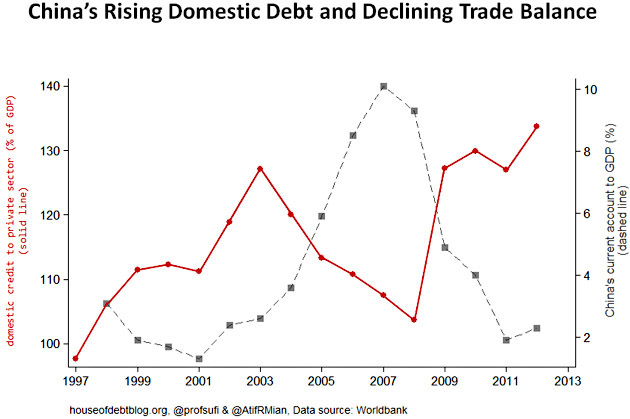Via Paul Krugman, Atif Mian and Amir Sufi give us the chart below today to chew over. It shows China’s declining trade surplus over the past decade, which authorities have effectively offset by a dramatic increase in private credit in order to boost domestic demand. The authors explain how this happened:
China got a break starting 2003….The rest of the world — and in particular the United States — was willing to borrow hundreds of billions of dollars every year to purchase Chinese goods (among other things)….The result was reduced pressure on domestic debt creation, and domestic debt went down from 125% of GDP in 2003 to almost 100% of GDP in 2008.
….The continued borrowing by western countries was not sustainable and by 2008 global demand for Chinese goods collapsed….How could China create new demand for its productive capacity? The answer once again came in the form of a rapid rise in domestic private debt. The Chinese state-owned banks with explicit prodding from the government opened their spigots. The country has seen an explosive growth in domestic private debt since 2008.
Is this sustainable? Probably not. It’s yet another reason to be concerned about the continued fragility of the global economy. We’re probably not strong enough to withstand a major shock from China.


















